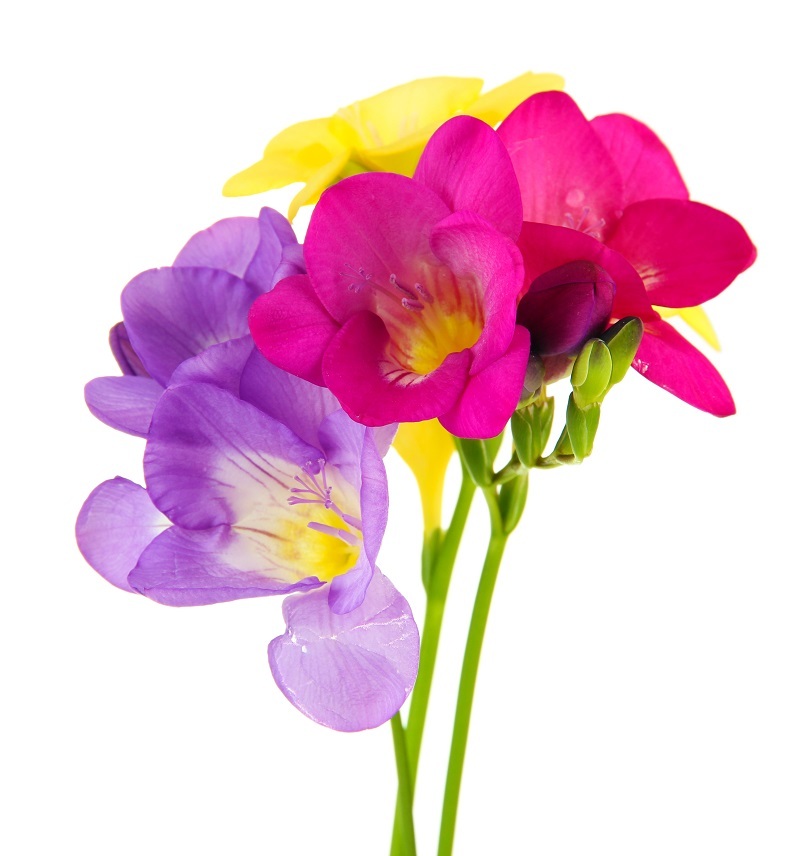Effective Tips for Making Poinsettias Last
Posted on 13/08/2025
Effective Tips for Making Poinsettias Last
Poinsettias are a classic symbol of the holiday season, known for their vivid red, white, or pink bracts and luscious green foliage. While they brighten up homes and public spaces during winter, many people struggle to keep their poinsettia plants healthy and beautiful beyond the holidays. Surprisingly, with a few effective tips and proper care habits, poinsettias can thrive much longer than just a few weeks.
This comprehensive article will provide you with a detailed guide on making poinsettias last. From choosing healthy plants and proper placement to watering, fertilizing, and even re-blooming, you'll discover all the essentials to enjoy your poinsettia for months to come.

Understanding Poinsettia Longevity
The secret to keeping poinsettias alive and vibrant lies in mimicking their native environment. Poinsettias (Euphorbia pulcherrima) originally hail from the warm, semi-tropical climates of Mexico and Central America, not drafty windowsills or overheated living rooms. To ensure your poinsettias last, you must create a cozy, gentle environment for them to thrive.
Why Do Poinsettias Often Decline So Quickly?
- Sudden temperature shifts - Exposure to cold drafts or direct heat can stress the plant.
- Improper watering - Overwatering or underwatering can cause root rot or leaf drop.
- Poor lighting - Insufficient light can result in faded bracts and weak stems.
- Lack of humidity - Poinsettias thrive in moderately humid environments.
By understanding their needs, you can avoid common mistakes and ensure your poinsettia plants stay lush and colorful for weeks or even months after the holiday season.
Selecting a Healthy Poinsettia
Your success with long-lasting poinsettias starts at the nursery or store. Choose wisely with these tips:
- Vibrant foliage: Look for plants with dark green, healthy leaves and bright, fully colored bracts (the colored leaves often mistaken for flowers).
- Sturdy stems: Avoid plants with weak, leggy, or drooping stems.
- Check for pests: Inspect leaves, especially the undersides, for insects or sticky residue.
- Avoid plants exposed to cold: Never buy poinsettias that have been placed near drafty doors or outside in the cold. Cold damage can kill them quickly.
- Unbroken bracts: Choose plants where the colorful bracts are not torn or blemished.
The healthier the poinsettia when you bring it home, the better its chance of lasting.
Best Practices for Poinsettia Care at Home
Follow these essential care tips to extend the life and color of your poinsettias far past the festive season.
1. Proper Placement Is Crucial
- Light: Place your poinsettia in a bright location, but avoid direct sunlight, which can scorch the bracts. A spot with indirect, filtered light for 6 hours a day is ideal.
- Temperature: Poinsettias prefer temperatures of 65-70?F (18-21?C) during the day and 60?F (15?C) at night. Do not expose them to cold drafts or sudden temperature shifts.
- Avoid heat sources: Do not place near radiators, fireplaces, or TVs where dry, hot air can cause them to wilt.
2. Correct Watering Techniques
- Keep soil moist but not soggy: Overwatering is the most common reason for poinsettia decline. Water only when the top of the soil feels dry to the touch.
- Drain excess water: Ensure the pot has drainage holes. Never let the pot sit in water for extended periods – this encourages root rot.
- Use room-temperature water: Cold water can shock the roots, so let the water reach room temperature before adding it.
- Remove foil wrapping: If your plant comes in decorative foil, always poke holes in the bottom or remove the foil to allow for drainage.
An easy rule: If in doubt, it's safer to slightly under-water than over-water. Consistency is key.
3. Maintain Humidity
Poinsettias originated in humid environments. Dry indoor air (especially in winter) can cause leaf drop. To boost humidity:
- Mist the leaves lightly once or twice a week (avoid getting the bracts too wet).
- Place a tray of pebbles and water beneath the pot, ensuring the pot is above water level which increases surrounding humidity.
- Use a room humidifier if your home is very dry.
Special Care Tips to Prolong Poinsettia Lifespan
1. Avoid Exposure to Cold
Never expose poinsettias to temperatures below 50?F (10?C). Even brief exposure to cold air can cause shock, resulting in wilting and dropped leaves. On your way home from the store, protect them by wrapping in paper or plastic to shield from chilly drafts.
2. Keep Away from Ethylene Gas
Ethylene gas is emitted by ripe fruit and some kitchen appliances and can speed up leaf drop in poinsettias. Keep your plants away from fruit bowls and gas stoves for greater longevity.
3. Occasional Fertilizing
- When to fertilize: Do not fertilize while your poinsettia is blooming. After the holiday period and as new growth appears (usually in late winter to spring), start feeding with a balanced, all-purpose plant fertilizer.
- How often: Fertilize once a month during the growing season (spring and summer). Never overfeed, as too much fertilizer can cause salt buildup and harm roots.
Encouraging Poinsettias to Re-Bloom
Most homeowners discard their poinsettias after the bracts fade, but with the right technique, you can make poinsettias bloom again next holiday season! Here's how to coax your plant back into festive color:
1. Prune and Rest
- Late winter/early spring: When colorful bracts fade, cut the plant back to about 6 inches tall. This encourages bushy new growth.
- Keep in a sunny window and continue moderate watering.
- Move outdoors (if possible) after the last frost. Place in bright, indirect light and feed every three weeks during the growing season.
2. The Short-Day Treatment
To re-bloom, poinsettias need extended hours of darkness.
- Starting in September or October, give the plant 14-16 hours of complete darkness each night for at least 8-10 weeks. You can cover it with a box or move it into a dark closet from early evening until morning.
- During the day, place the plant back in indirect sunlight for 8-10 hours.
After 8-10 weeks, you should see new colored bracts forming, ready for another season of beauty!
Common Poinsettia Problems & How to Fix Them
- Leaves turning yellow and dropping: Usually caused by overwatering, roots standing in water, or sudden cold drafts. Drain pot thoroughly, water less frequently, and keep away from cold windows or doors.
- Leaf edges browning: Low humidity or direct hot air can cause this. Increase humidity, keep away from heat vents, and mist regularly.
- Wilting: Check soil moisture. If too dry, soak the soil. If too wet, improve drainage.
- Pests: Watch for whiteflies, aphids, and spider mites. Remove them by rinsing with water or using insecticidal soap.
Frequently Asked Questions about Poinsettia Care
Are poinsettias poisonous?
Poinsettias are not highly toxic. While they are mildly irritating to pets and humans if ingested, severe reactions are rare. Keep out of reach of children and pets as a precaution.
Can poinsettias be planted outside?
In warm climates (USDA zones 9-11), poinsettias can be planted outdoors in a sheltered, partially shaded spot after the last frost. In colder climates, treat as houseplants or overwinter indoors.
How long do poinsettias last with proper care?
With excellent care, poinsettias can stay attractive for 2-3 months indoors. With year-round care and re-blooming efforts, they can thrive for years!
Poinsettia Care Calendar: Month-by-Month Guide
- December: Enjoy your festive poinsettia. Keep warm, evenly moist, and in filtered light.
- January-March: As color fades, reduce watering slightly. Prune back when bracts drop.
- April-May: Repot if necessary. Move to a bright sunny spot, increase watering, and start feeding monthly.
- June-August: Move outdoors (if climate permits). Pinch tips to encourage bushiness.
- September-October: Begin short-day dark treatment for re-blooming.
- November: Move back to a bright spot and enjoy new bracts developing.

Summary: How to Make Poinsettias Last
- Start with a healthy plant from a reputable source
- Keep in bright, indirect light and stable temperatures
- Water when soil is dry – never overwater
- Increase humidity to prevent leaf drop
- Shield from drafts, heat, and ethylene gas
- Fertilize only when not blooming
- Prune and rest for long-term care
- Use darkness treatment for re-blooming
By following these effective tips for making poinsettias last, you'll be able to enjoy lush, colorful poinsettias not just during the holidays, but throughout the year. With a little attention and care, these vibrant plants can become a long-term part of your indoor garden.
Conclusion
Poinsettias are more than just a seasonal decoration; with the right care, they can flourish year-round. Remember: Avoid extremes in temperature, water carefully, increase humidity, and provide consistent gentle light. Whether you want your plant to last through Valentine's Day, or hope to re-bloom it for years to come, the lasting beauty of poinsettias is well within your reach.
Ready to turn your holiday purchase into a lasting, thriving houseplant? Apply these proven suggestions for keeping poinsettias vibrant and beautiful – and enjoy their cheerful color all season long!
Latest Posts
Effective Tips for Making Poinsettias Last
Reveal the petal that resonates with your spirit
Cultivate Calm: The Best 10 Office Plants Needing Minimal Care





